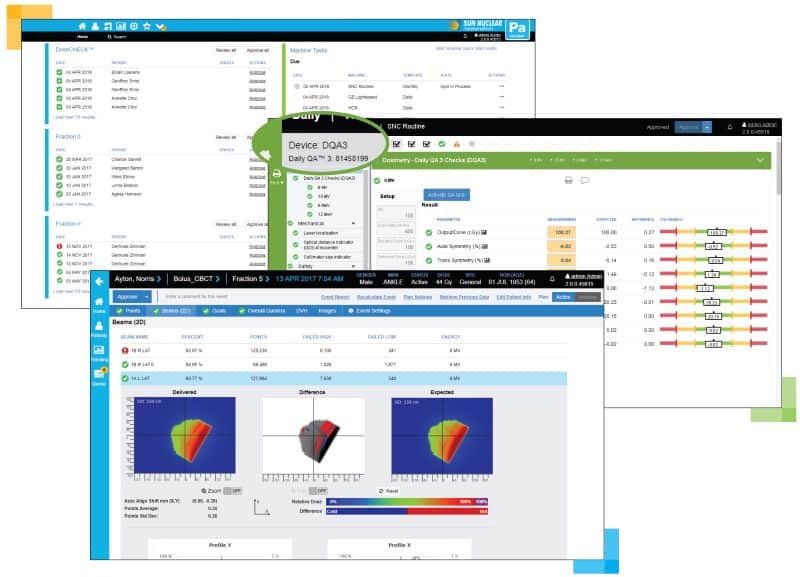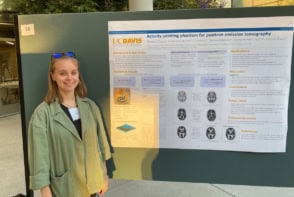Sun Nuclear continues to streamline and standardize patient-specific and machine-based quality assurance by integrating all phases into a single database-driven platform. Jeff Simon, CEO, takes us behind the scenes on the firm’s development strategy and we discover how the latest release, SunCHECK 2.0, is helping to focus resources in the clinic

The delivery of radiation therapy is supported by a wide range of information on the patient, the treatment plan, and the linear accelerator (linac) that manufactures and administers the dose. It’s a branch of medicine that has become highly computerized, involving different combinations of hardware and software, and featuring a wide range of clinical tools and devices.
“One of the biggest challenges facing clinicians is being able to keep up with the rapidly evolving technology and ensure that the treatments are being delivered as intended to the patients,” comments Jeff Simon, CEO of Sun Nuclear – a provider of solutions for radiation oncology quality assurance (QA). “There are a lot of different checks that have to occur in managing, verifying and validating across the whole workflow.”
These steps involve a combination of machine and patient QA to ensure that the whole process runs according to plan.
As part of a multi-year programme, Sun Nuclear has been busy harmonizing each step in the QA process to make radiotherapy much simpler and intuitive for its customers – predominantly medical physicists and radiotherapists working in cancer clinics.
It’s a mission statement that few would argue against, but it’s also a bold undertaking. According to the firm’s figures, more than 4000 cancer treatment facilities worldwide use Sun Nuclear solutions.
“Being able to tap the brakes and create a whole new architecture while keeping current product lines competitive and up-to-date is definitely easier said than done,” admits Simon.
However, the benefits are compelling. “Integration and standardization are really important themes and goals here,” he emphasizes. “With SunCHECK 2.0, we’ve essentially combined the routine mechanical and the routine patient checks into one user interface with a common architecture and a common database.”
Robert Biggar – a principal clinical scientist based at the Clatterbridge Cancer Centre NHS Foundation Trust in the UK – has been involved in beta-testing the software. He sees unified architecture as a major step forward in helping him to do his job more efficiently thanks to the software’s ability to gather and process results in the background.
“It can be difficult to get different pieces of radiotherapy equipment, databases and patient information systems to interact with each other, but Sun Nuclear has managed to get inside the bare bones of how their systems work and integrate all of these information flows into a single platform,” Biggar comments. “One of the biggest benefits is the automation, which helps to focus our resources on the cases that need the most attention.”
Another key requirement was to make the SunCHECK platform agnostic to specific vendors’ technologies. “It doesn’t matter what treatment machine you have or which planning system you have, you’ll get the same results,” Simon explains. “You have standardization across the entire workflow.”
Rather than create a “wrapper” on top of older software, Sun Nuclear decided to re-write and expand its product suite from the ground up, which delivers a number of advantages to users.
“With our software there’s no waiting – the device data show up instantaneously,” Simon highlights. “There’s no need for manual synchronization or mapping of data fields – it’s all automatic.”
The web-based network architecture allows users to connect multiple geographic locations to gain a top-down view in the same dashboard, supported by the same database. What’s more, SunCHECK’s server installation streamlines updates and makes it straightforward to access.
User licenses are based on the number of linacs, rather than having to worry about separate licensing for each workstation.
SunCHECK integrates a number of the company’s QA and dosimetry tools as well as the linacs’ electronic portal imaging devices (EPIDs). “We calibrate the EPID to absolute dose so that you can use it for both pre-treatment QA as well as in vivo monitoring to check each specific treatment delivery,” says Simon. “We can automatically capture the EPID data and bring it into our system for automatic processing to show what dose was delivered and warn the user if there are any deviations from what was expected.”
The EPID can highlight any positioning errors or changes in patient anatomy since it detects the beam after passing through the patient. The EPID also provides a way of verifying the linac’s log files – for example, after routine servicing or the installation of a new component in the setup.
“A lot of the basic routine QA that we used to do with phantoms and ion chambers we are now able to do directly to the imaging panel,” Biggar explains. “Effectively your setup for QA purposes is instant, as you are leveraging equipment that’s already in place on the treatment machine.”
There are other possibilities too, thanks to a combined patient and machine QA environment. “When you have all of those data together, you are now in a position to use machine learning to look for correlations and different predictive analytics that weren’t possible before,” says Simon. “The intention is to take these data and provide decision support to clinicians to help them understand where the issues and opportunities may be.”
Installed across networked cancer centres, the software makes it much easier to spot any deviations between results at one site versus another. “It is a powerful tool for looking across your network,” adds Simon. “We have the broadest range of hardware products, and now with SunCHECK, we have the broadest software platform for comprehensive and independent quality assurance.”
To find out more, visit https://www.sunnuclear.com/suncheck




